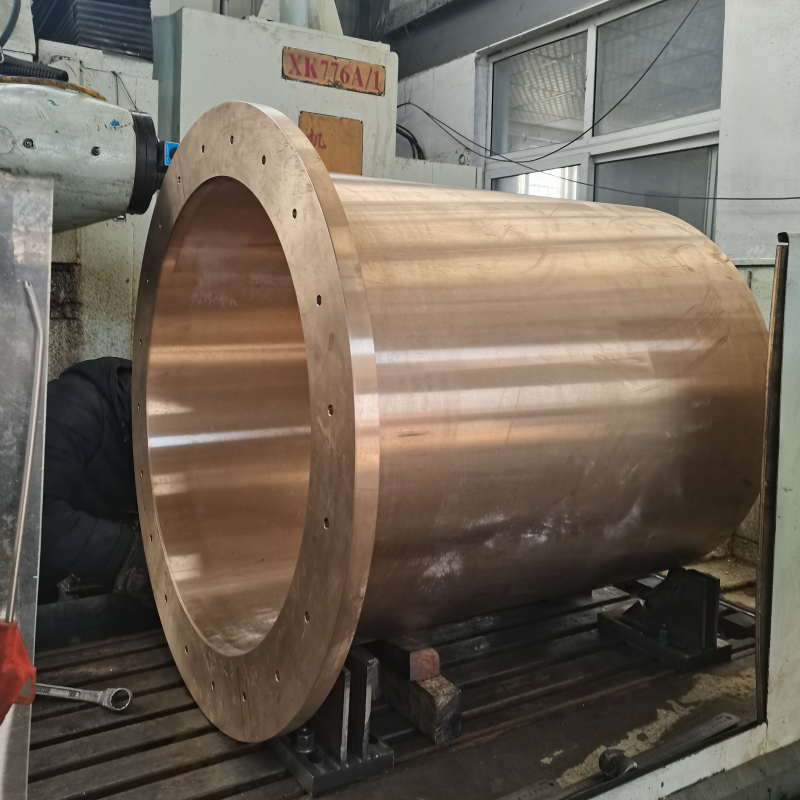Different materials flange copper sleeve in the use of temperature there are some differences, mainly as follows:
First, tin bronze flange copper sleeve
Low temperature performance
At lower temperatures, tin bronze flange copper sleeve can still maintain good toughness and strength. Generally can be close to -40 ℃ environment normal work, will not appear obvious embrittlement phenomenon. This is because the tin element in tin bronze can improve the low-temperature performance of copper, so that it is not easy to fracture in the cold environment.
High temperature performance
Tin bronze flange copper sleeves also have a certain degree of stability at high temperatures. Usually can be about 200 ℃ temperature normal work, its strength and hardness will not appear obvious decline. This is because tin bronze has good heat resistance, can withstand a certain degree of high temperature.

Second, aluminum bronze flange sleeve
Low temperature performance
Aluminum bronze flange copper bushings also have excellent performance at low temperatures. Generally can be used in the environment below -40 ℃, its strength and hardness will not be significantly reduced. The aluminum element in aluminum bronze can improve the strength and hardness of copper, but also improve its low temperature performance.
High temperature performance
Aluminum bronze flanged copper sleeves also perform very well at high temperatures. It can operate at much higher temperatures, typically up to around 300°C. This is due to the fact that aluminum bronze has a good temperature profile. This is because aluminum bronze has good high temperature resistance and can withstand higher temperatures and pressures.

Third, lead bronze flanged copper sleeves
Low temperature performance
Lead bronze flange copper bush in the low temperature performance is relatively weak. Generally used in -20 ℃ environment is more appropriate, when the temperature is too low, lead bronze may appear embrittlement phenomenon, affecting its performance and service life.
High temperature performance
The performance of lead bronze flange bushings at high temperatures is also limited. Generally, it is more stable to work at a temperature of about 150°C. When the temperature is too high, the lead will soften, resulting in a decrease in the strength and hardness of the bronze sleeve, and an increase in wear.
| Previous:How do changes in the coefficient of friction affect the service life of copper bushing? | Next:What is the difference in sealing performance between copper gasket made of different materials? |




 Copyright © 2022
Copyright © 2022